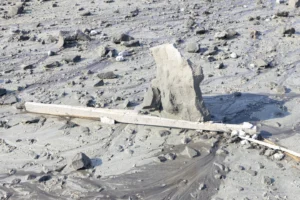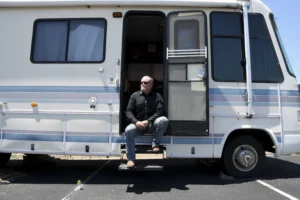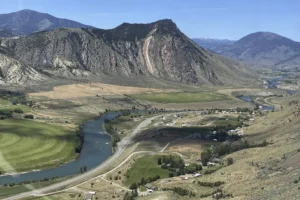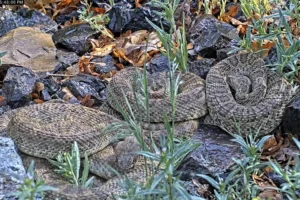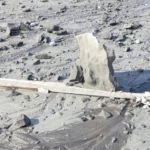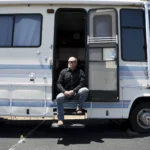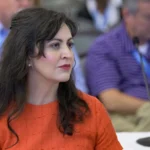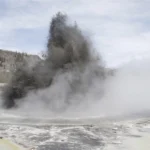Casper Resident’s Facebook Page Tracks Wyoming’s Missing Persons
Tinoco started petition for state to create a database that tracks cases
- Published In: Other News & Features
- Last Updated: Nov 11, 2021

This Facebook Group for "Missing people of Wyoming" was created by Desiree Tinoco of Casper a little more than two years ago after she learned that the state did not have a database for tracking these cases.
By Michael Tunison
Special to the Wyoming Truth
Casper resident Desirée Tinoco has spent the past few years running a popular Facebook group tracking missing persons cases in Wyoming, while also pressing state officials to create a government-run database tracking the missing. Over the summer, she presented Gov. Mark Gordon with a petition carrying 30,000 signatures supporting the project. The governor’s office responded to Tinoco, saying he would consider any legislation and has made missing persons a priority.
Despite consistently ranking in the top 10 states with the most missing people per capita, Wyoming is one of 14 states without a database or one that is not user friendly. Tinoco is optimistic this will be addressed in the 2022 legislative session because she found lawmakers willing to advance a bill. In the meantime, she has worked with the Wyoming Division of Criminal Investigation (DCI) to improve the list featured on DCI’s recently redesigned website. They have made it the first result to show up on DCI’s website when someone searches for missing persons. The website is updated more frequently than it had been, but not as often as it should be, Tinoco added. A database, as opposed to a simple list on a website, would store more information on each missing person, provide uniform categories for details about the person, make it more easily searchable and easier to update.
Tinoco spoke with the Wyoming Truth about her experience running the group, the recent surge of interest, and what she hopes to see from a prospective Wyoming missing persons database. This interview has been condensed for brevity.

WYOMING TRUTH: What drove you to start the Facebook group?
DESIRÉE TINOCO: About two and a half years ago, I heard from a friend that there were two different cases of men who were missing here in Casper, Wyoming, where I live — one of which had (a) drug history and the other one had warrants. I was really surprised no one was talking about these cases. I was a member of several discussion groups in town on Facebook and really active in my community. I thought for sure I would know about something like this. Since then, one body has been found, deceased, sadly. The other person is still listed (as) missing. He’s even on the DCI’s website. And people just didn’t seem to take it seriously, I think because of their questionable backgrounds. It seems to be a recurring pattern. Some cases just aren’t getting the attention others are, and I thought that was really unfair, for people, for the families, especially if somebody is on drugs or has warrants. Their family didn’t choose their lifestyle, and when they go missing it doesn’t hurt any less. It probably, in fact, hurts more because it’s dragged out far longer before they are considered missing.
I’m part indigenous, and I’ve lived on two reservations, and I’ve seen firsthand the issues we have, so it really hits home. … It becomes a really awkward kind of a racially divided conversation. I don’t want to step on any toes, but we’ve got a lot of missing indigenous people, and we really need to fix that problem as well. So, you don’t see that same dedication (when) people from the reservation or people of questionable backgrounds go missing, or a middle-aged man goes off hunting. There’s not that desperate attitude as there is when a child goes missing, or a beautiful woman goes missing. It’s definitely a different feel around it completely. You see that time and time again. …
WYOMING TRUTH: What specifically about having a state-run database would help with the indigenous missing and murdered?
DESIRÉE TINOCO: Just having the knowledge out there. Just being able to inform the public. There’s a lot of misinformation. It’s not just having the database. It’s about having the information provided to the public. When I first started the group, I was looking for the do’s and don’ts, the stop-drop-and-roll of missing persons, and I couldn’t find anything for Wyoming. But I started to look around at surrounding states, and they all had this information provided to the public. And so that’s when I went to DCI, who is in charge of our database and would be in charge of an up-to-date database. Now when I started on this, they didn’t have much of a database. Their funding is low. … Wyoming generally is for small government, and slow to come around on things. But we see what works for other states, and we (can) learn from them. …

WYOMING TRUTH: I’ve seen you single out South Dakota’s database as especially effective. What is it about theirs that you like?
DESIRÉE TINOCO: I just felt that they’re the most like our state in a lot of ways. They also have reservation land. They have desolate areas, smaller population. They’re as close to Canada as we are. They’re our next-door neighbor. They just put their database together maybe a year ago. … They’re actually in the middle of changing their database to an automated one. Of course, they have a bigger population, so it’s more of a necessity for them. … There are other states that have different protocols in place for their databases, and they have great ideas as well. We’re one of 14 states that I personally felt had some sort of issue, be it that we didn’t have a database, or it wasn’t up to date enough, or not user-friendly. But even those states, they still had a reference page, and we didn’t really have even that until a couple of weeks ago. DCI has really stepped up and made some tremendous improvements since I suggested this to them, and I’m very grateful for them to listen to that.
WYOMING TRUTH: Is there a specific way you would like to see a Wyoming database structured? Any kind of demographic information that might be missing from one of the other ones that you would like to see the Wyoming database include?
DESIRÉE TINOCO: Some states have maps. Ours initially did, but they only had about 12 cases listed on there. It wasn’t up to date. Nobody was maintaining it. It got taken down when DCI redid their site. I’d love to see the map included again so people can have a visual, especially with national parks. Having an option to share on social media, like Facebook, I think is a great tool. Having statistics as well on there, and basically explaining to the public “this is how things happen, this is what happens” and highlighting the indigenous people since they represent a disproportionate share of the missing.
When I initially brought the concerns to them, the list was on the third page of search results for a missing person database for Wyoming. For every other state, it was the very first thing that showed up. In our state, sadly, my group was the first thing that showed up. When you’re going to Google and it’s referring you to yourself, that’s a major problem. Government should be the first thing that shows up. A lot of people would take that as a compliment. I don’t.
WYOMING TRUTH: I saw an article in early September about your efforts. At that point, your Facebook group was at roughly 11,000 members. Has there been a further spike drummed up by recent news?
DESIRÉE TINOCO: All this stuff started before the Gabby Petito case. I hope you make sure that’s clear. Although her case bringing awareness has been great, it comes with negative side effects as well. It did bring up the numbers quite a bit. We’re at just under 16,000 members right now. Before her disappearance, we were averaging around 160,000 views in 60 days in the group. As of right now, we’re up 341 percent. And it’s really crazy because there was a calm before the storm. There was a good three or four days where there wasn’t a single post or anything. And I was like, “What the hell is about to happen?” And that first ping that went up when Gabby was reported missing, and I was like, … “Here we go.” Thankfully, I was able to speak to the family through a mutual friend. I warned them way back in the beginning. I said if any whack jobs come out of the woodwork, if anybody is asking you for money to do anything, it’s a scam. I told them We Help The Missing is a great non-profit. I was like, “This is what to do, this is how to do it.” I just wish I had been able to give that information to people previously. All the knowledge that I’ve gathered over the last two and a half years — I look back on other cases and regret that I wasn’t able to help them more.
WYOMING TRUTH: Have there been examples of people being found based on tips from the group?
DESIRÉE TINOCO: Yeah, there have been a couple. … We had a kid — I cannot think of his name. … (He) was a runaway from Cody and somebody was like, “I could be crazy, I swear I just saw him here in Casper.” I said please go to law enforcement with any information. They called it in, and sure enough it was that kid, and he was found that day and taken back home.

